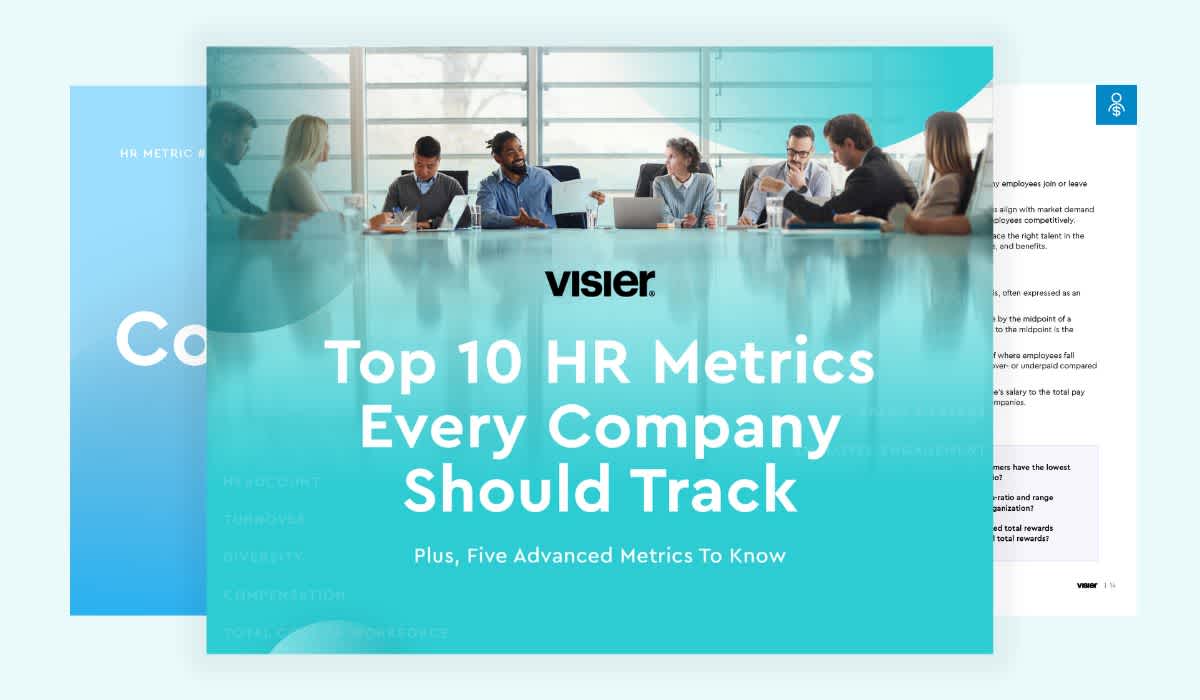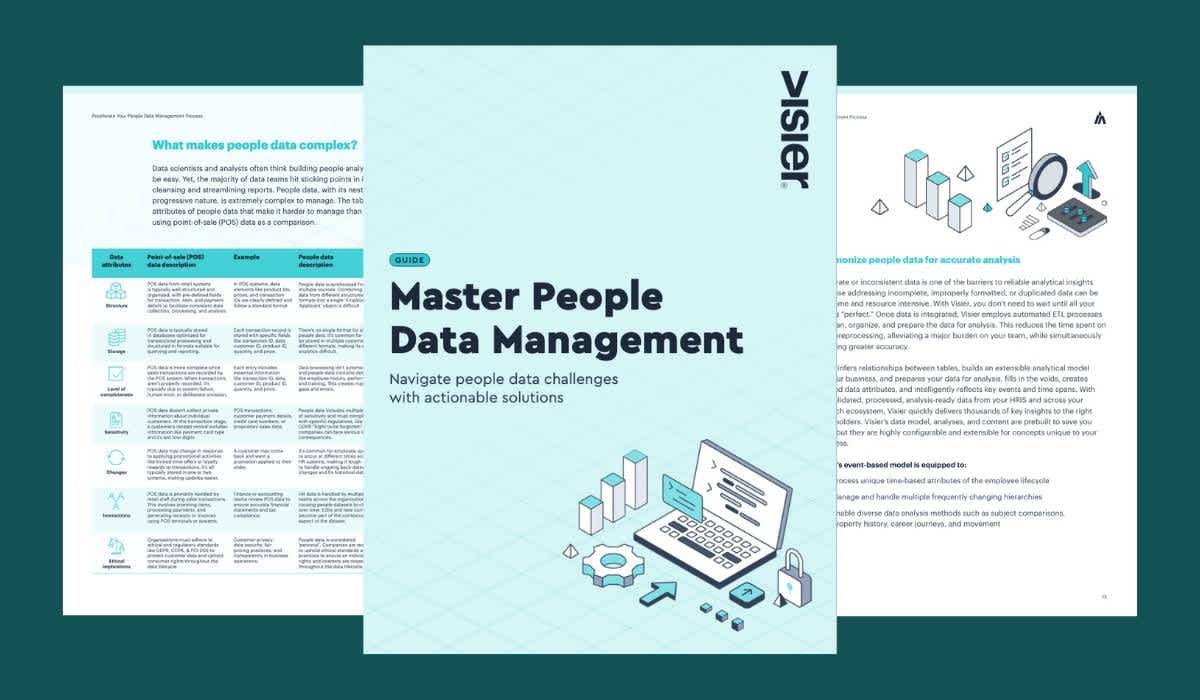The Great HR Gender Divide
Is there a gender divide in HR? With women taking the top HR jobs, how influential a role does the CHRO play as a strategic advisor?

Having worked in the tech industry for nearly twenty years now, being the only woman in the room doesn’t faze me.
But I have to admit, when I became part of the Visier team I was excited to be joining a tech company that serves a female-dominated market. After all, 76% of Human Resources Managers are women, according to 2014 statistics from the US Department of Labor. And, perhaps even more impressive — given gender disparity at executive levels — 49% of HR Officers at the US’s top 100 corporate employers (based on employee counts) are women.
However, as I’ve learned over the past year and a half, there is more to it than holding the executive title of Chief Human Resources Officer (CHRO).
Are We There Yet?
The expression “getting a seat at the table” has become so overused that I’ve seen HR leaders physically cringe when it is mentioned. Indeed, the idea was already considered “close to 20 years” old when Fast Company published its infamous article, Why We Hate HR, which is coming up on its ten-year anniversary this year.
However, the question remains: while some are optimistic that women will increasingly take the top HR jobs over the next ten years, how influential a role does the CHRO play as a strategic advisor. And is there a gender bias?
The Gender Divide
Survey results presented by SHRM indicate there is a gender divide. In a 2010 survey of CHROs at US Fortune 200 companies, respondents were asked how much of their time they spend in various roles:
Male CHROs said they spend 37.6% of their time either being a “strategic advisor” (19.2%) and “counselor, coach, of confidante” (18.4%)
Comparatively, female CHROs said they spend only 29.3% of their time in these roles (14.2% being a strategic advisor, and 15.1% being a coach).
What Does This Mean?
The survey defined the “strategic advisor” role as consisting “of all those activities that focus on attempting to influence the strategy of the firm. These activities could be providing human capital information regarding potential business performance issues (e.g., increasing turnover among high potentials), playing devil’s advocate regarding strategies being discussed, or simply providing credible business-based opinions regarding the feasibility or effectiveness of proposed strategic decisions.”
The survey defined the “Counselor / Coach / Confident” role as “dealing with all of the conflicts and challenges that happen when a group of highly ambitious people must work interdependently with one another as in an executive team. It sometimes entails having one-on-one coaching sessions, having individual conversations with executives to surface their issues and concerns, and sometimes being a go-between among feuding executives.”
You could call these the high profile roles.
So where do female CHROs spend more of their time? Both genders say they spend about the same amount of time acting as a board liaison, HR leader, and firm representative. But female CHROs spend more time than their male counterparts in the role of �“Talent Architect.”
The “Talent Architect” role is more functionally HR-focused, being defined as “ensuring that the right people are in the right positions at the highest levels of the firm. As opposed to the strategic advisor where the focus is on the nature of the business strategies themselves and the broad organization capability necessary to implement them, the talent architect role aims at ensuring that the right leadership is in place to execute the strategy or initiative. It requires frequent communication and relationship building with the top leaders and intuitive eye for assessing their talent.”
The resulting finding is that female HR leaders spend more time on functional activities than strategic ones, and are less likely to be considered strategic advisors or executive coaches.
The Litmus Test
There is a simple litmus test that can give a sense of gender equality in HR: compensation.
Here are the numbers, according to 2014 statistics from the US Department of Labor:
Although 76% of HR Managers are women, male HR Managers earn 40% more than their female counterparts. Female HR Managers hold an average median weekly salary of $1,300 compared to $1,827 for male HR Managers. That is $527 less a week, or $27,404 less a year.
Similarly, in the HR Worker category, men earn 38% more than women. Female HR Workers hold an average median weekly salary of $912 compared to $1,257 for men. That is $345 less a week, or $17,940 a year. It is also interesting to note that male HR Workers are earning almost the same average weekly median salaries as females holding the more senior HR Manager role.
Finally, in HR Executive’s “HR’s Elite: Class of 2013” list, printed in September 2014, only 11 of the 50 top earning HR leaders were women.
3 Ways to Overcome the Gender Divide in HR
There is good news in all of this.
First, remember the Talent Architect role described above? This is a high value role — one that, done well, can bring incredible business value and competitive advantage to an organization, as well as significant personal career fulfillment.
Second, there are new technology solutions available today that are designed to enable HR to play a more proactive, strategic leadership role. In the past, HR has been woefully underserved in this area — this is no longer the case.
Leaders that arm their teams with easy-to-access and understand data-driven workforce insights, are helping all their HR managers and business partners (regardless of gender!) have better, more strategic conversations and make better decisions. It’s hard not to be taken seriously when you have hard data backing you up. And it is even harder to not play a strategic role at the proverbial table if you are able to proactively provide fact-based recommendations on strategic business decisions.
Third, while the gender divide is prevalent in HR, it is even more prevalent in other functional areas. While women hold almost 52% of all professional-level jobs, women comprise only 14.6% of executive officers, 8.1% of top earners, and 4.6% of Fortune 500 CEOs, based on research shared by the Center of American Progress in March 2014. In HR, women hold 49% of the top jobs, and — based on the HR Executive list — make up 22% of the top earners list.
The takeaway? HR may actually be paving the way for females to take on a greater and more equitable role in corporate leadership.
Finally, there is an increasingly active dialog happening about this gender divide — and the business benefits of correcting it. Recent research by McKinsey & Company, for instance, found that when “companies commit themselves to diverse leadership, they are more successful.” Specifically, the McKinsey & Company study found that “companies in the top quartile for gender diversity are 15% more likely to have financial returns above their respective national industry medians.” In other words, closing the gender gap is not just ethically right, it also makes good business sense.


